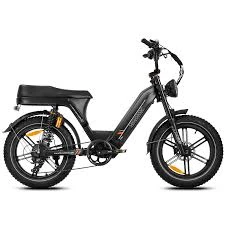
- Afrikaans
- Albanian
- Amharic
- Arabic
- Armenian
- Azerbaijani
- Basque
- Belarusian
- Bengali
- Bosnian
- Bulgarian
- Catalan
- Cebuano
- Corsican
- Croatian
- Czech
- Danish
- Dutch
- English
- Esperanto
- Estonian
- Finnish
- French
- Frisian
- Galician
- Georgian
- German
- Greek
- Gujarati
- Haitian Creole
- hausa
- hawaiian
- Hebrew
- Hindi
- Miao
- Hungarian
- Icelandic
- igbo
- Indonesian
- irish
- Italian
- Japanese
- Javanese
- Kannada
- kazakh
- Khmer
- Rwandese
- Korean
- Kurdish
- Kyrgyz
- Lao
- Latin
- Latvian
- Lithuanian
- Luxembourgish
- Macedonian
- Malgashi
- Malay
- Malayalam
- Maltese
- Maori
- Marathi
- Mongolian
- Myanmar
- Nepali
- Norwegian
- Norwegian
- Occitan
- Pashto
- Persian
- Polish
- Portuguese
- Punjabi
- Romanian
- Russian
- Samoan
- Scottish Gaelic
- Serbian
- Sesotho
- Shona
- Sindhi
- Sinhala
- Slovak
- Slovenian
- Somali
- Spanish
- Sundanese
- Swahili
- Swedish
- Tagalog
- Tajik
- Tamil
- Tatar
- Telugu
- Thai
- Turkish
- Turkmen
- Ukrainian
- Urdu
- Uighur
- Uzbek
- Vietnamese
- Welsh
- Bantu
- Yiddish
- Yoruba
- Zulu
Nov . 23, 2024 13:00 Back to list
how to fix a derailleur on a mountain bike
How to Fix a Derailleur on a Mountain Bike
A properly functioning derailleur is crucial for the smooth operation of your mountain bike's shifting system. If you notice that your gears are not shifting properly, it may be time to troubleshoot and fix the derailleur. Here’s a step-by-step guide to help you resolve common issues you might encounter.
Understanding the Derailleur
The derailleur is a small mechanism located near your bike’s rear wheel that moves the chain between different gears on the cassette. A well-aligned and adjusted derailleur ensures that shifts are crisp and precise. If your bike struggles to shift, it doesn't always mean you need a new derailleur; it might just need some adjustments.
Tools You Will Need
Before you begin, gather the necessary tools - Allen wrenches (typically 4mm and 5mm) - Screwdriver - Chain lubricant - Cleaning cloth - A bike stand (optional but helpful)
Step 1 Inspect the Derailleur
Start by inspecting your derailleur for any visible damage, such as bent components or wear and tear. Make sure the mounting bolt is tight and that the derailleur is seated correctly on the hanger. If the derailleur is bent, you may need to carefully realign it by hand or use a derailleur alignment tool.
Step 2 Check the Cable Tension
Shift the bike into the smallest chainring and the smallest rear cog. This positions the derailleur in a neutral place, allowing you to check for cable tension. Pull the shifter and observe how the derailleur responds. If it’s slow to shift or doesn’t shift at all, you may need to adjust the cable tension.
how to fix a derailleur on a mountain bike

To do this, locate the barrel adjuster on the derailleur or shifter. Turn it counterclockwise to increase tension. Shift gears again to see if this resolves the issue.
Step 3 Adjust the Limit Screws
If your derailleur is shifting poorly to the highest or lowest gears, it could be that the limit screws are misadjusted. Most derailleurs have two limit screws labeled ‘H’ (high) and ‘L’ (low).
1. High Limit (H) Ensure the derailleur doesn’t push the chain past the smallest cog. Shift to the smallest cog, and if the chain tries to move further, tighten the H screw. 2. Low Limit (L) This prevents the chain from moving off the largest cog. Shift to the largest cog and adjust the L screw if the chain attempts to go beyond that gear.
Step 4 Clean and Lubricate
A clean derailleur operates more efficiently. Grit and grime can hinder the movement. Use a clean cloth to wipe down the derailleur, making sure to remove dirt and debris. After cleaning, apply a few drops of chain lubricant to the pivot points on the derailleur.
Step 5 Test Ride
After making your adjustments, it's time for a test ride. Go through all the gears and ensure that the shifting is smooth and responsive. If you still encounter issues, you might need to repeat some of the steps or consider replacing the derailleur if it is damaged beyond repair.
Conclusion
Fixing a derailleur on your mountain bike may seem daunting, but with the right tools and a little patience, it can be an easy fix. Regular maintenance, including cleaning and adjustments, will ensure that your bike’s shifting system stays in top shape, allowing for a smooth and enjoyable ride. Remember, if you’re ever unsure, consulting a professional bike mechanic is a great option. Happy riding!
-
The Ultimate Kids' Four-Wheeler Experience
NewsJul.09,2025
-
The Ultimate Guide to Mountain Bikes: Gear Up for Your Ride
NewsJul.09,2025
-
The New Age of Cycling: Electric Bikes for Every Rider
NewsJul.09,2025
-
The Best Kids Bicycles: Ride in Style and Safety
NewsJul.09,2025
-
The Best 3-Wheel Scooters for Kids: Fun, Safety, and Adventure
NewsJul.09,2025
-
Revolutionize Your Ride: Affordable Electric Bikes
NewsJul.09,2025
-
Finding the Perfect Mountain Bike for Every Rider
NewsJul.09,2025



